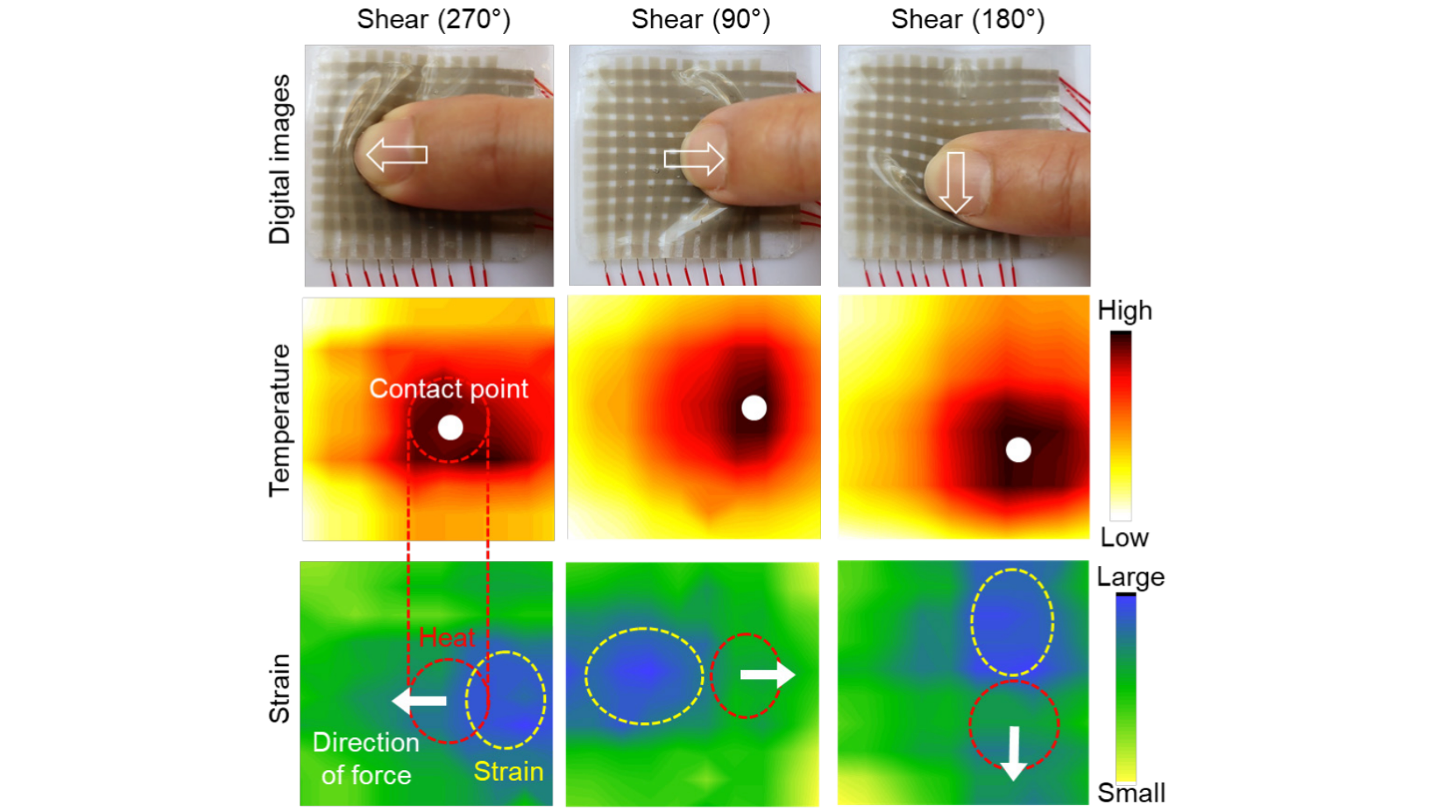Artificial multimodal receptors based on ion relaxation dynamics

Title: Artificial multimodal receptors based on ion relaxation dynamics
Authors: Insang You, David G. Mackanic, Naoji Matsuhisa, Jiheong Kang, Jimin Kwon, Levent Beker, Jaewan Mun, Wonjeong Suh, Tae Yeong Kim, Jeffrey B.-H. Tok, Zhenan Bao, Unyong Jeong
Journal: Science, 370(6519):961-965 (2020)
DOI: 10.1126/science.aba5132
Abstract:
Human skin has different types of tactile receptors that can distinguish various mechanical stimuli from temperature. We present a deformable artificial multimodal ionic receptor that can differentiate thermal and mechanical information without signal interference. Two variables are derived from the analysis of the ion relaxation dynamics: the charge relaxation time as a strain-insensitive intrinsic variable to measure absolute temperature and the normalized capacitance as a temperature-insensitive extrinsic variable to measure strain. The artificial receptor with a simple electrode-electrolyte-electrode structure simultaneously detects temperature and strain by measuring the variables at only two measurement frequencies. The human skin-like multimodal receptor array, called multimodal ion-electronic skin (IEM-skin), provides real-time force directions and strain profiles in various tactile motions (shear, pinch, spread, torsion, and so on).
関連論文:





